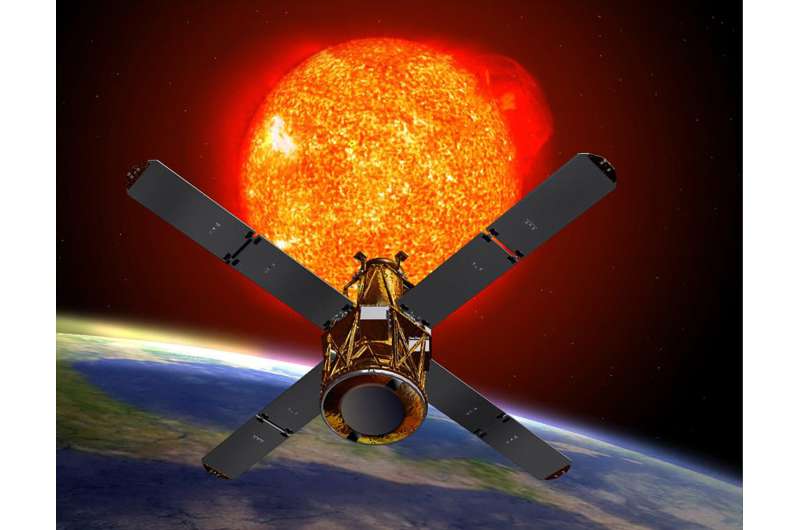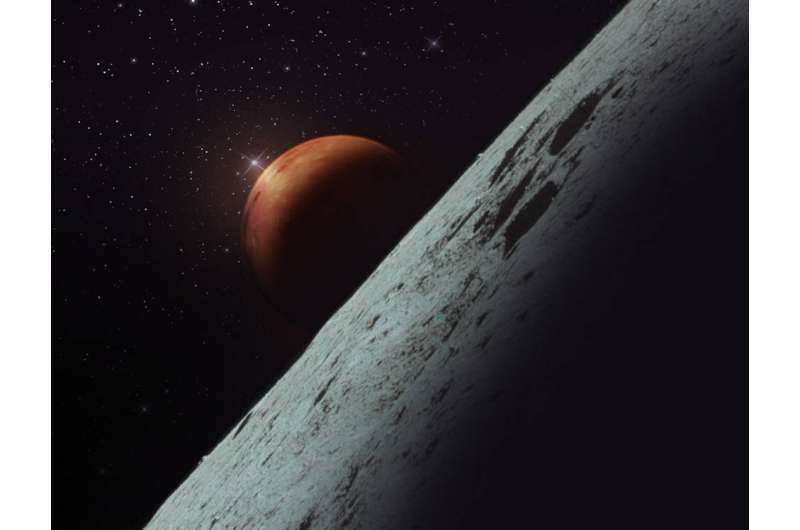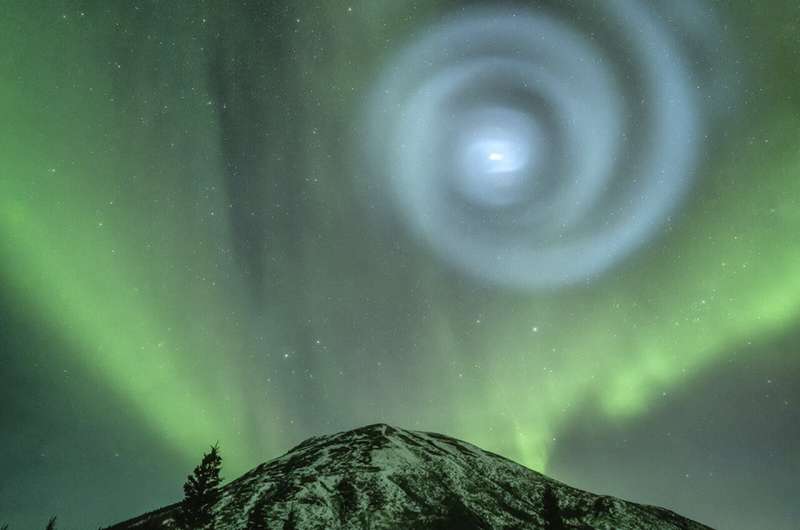
Copernical Team
India approves construction of its own LIGO
 The Indian government has granted the final approvals necessary for construction to begin on LIGO-India, a nearly identical version of the twin LIGO (Laser Interferometer Gravitational-Wave Observatory) facilities that made history after making the first direct detection of ripples in space and time known as gravitational wavesin 2015. The Indian government will spend about $320 million to build
The Indian government has granted the final approvals necessary for construction to begin on LIGO-India, a nearly identical version of the twin LIGO (Laser Interferometer Gravitational-Wave Observatory) facilities that made history after making the first direct detection of ripples in space and time known as gravitational wavesin 2015. The Indian government will spend about $320 million to build NASA satellite's elusive green lasers spotted at work
 The green light streaking across the cloudy sky was something that Daichi Fujii had never seen before. The museum curator's motion-detecting cameras were set up near Japan's Mount Fuji to capture meteors, allowing him to calculate their position, brightness, and orbit. But the bright green lines that appeared on a video taken Sept. 16, 2022, were a mystery.
Then Fujii looked closer. The be
The green light streaking across the cloudy sky was something that Daichi Fujii had never seen before. The museum curator's motion-detecting cameras were set up near Japan's Mount Fuji to capture meteors, allowing him to calculate their position, brightness, and orbit. But the bright green lines that appeared on a video taken Sept. 16, 2022, were a mystery.
Then Fujii looked closer. The be Clouds Above, Contact Science Below: Sols 3800-3802
 Here in Toronto, the weather feels like summer. But in Gale Crater it's coming towards the end of Autumn. At this time of year, we enter Aphelion Cloud Belt season, when we see regular formation of water-ice clouds. While not as striking as the twilight clouds earlier in the year, these clouds form every Mars year at around the same time and last for many months, making this the perfect opportun
Here in Toronto, the weather feels like summer. But in Gale Crater it's coming towards the end of Autumn. At this time of year, we enter Aphelion Cloud Belt season, when we see regular formation of water-ice clouds. While not as striking as the twilight clouds earlier in the year, these clouds form every Mars year at around the same time and last for many months, making this the perfect opportun How did Earth get its water
 Our planet's water could have originated from interactions between the hydrogen-rich atmospheres and magma oceans of the planetary embryos that comprised Earth's formative years, according to new work from Carnegie Science's Anat Shahar and UCLA's Edward Young and Hilke Schlichting. Their findings, which could explain the origins of Earth's signature features, are published in Nature.
For
Our planet's water could have originated from interactions between the hydrogen-rich atmospheres and magma oceans of the planetary embryos that comprised Earth's formative years, according to new work from Carnegie Science's Anat Shahar and UCLA's Edward Young and Hilke Schlichting. Their findings, which could explain the origins of Earth's signature features, are published in Nature.
For Rocket Lab introduces suborbital testbed rocket, selected for hypersonic test flights
 Rocket Lab USA, Inc (Nasdaq: RKLB) has formally introduced the HASTE rocket (Hypersonic Accelerator Suborbital Test Electron), a suborbital testbed launch vehicle derived from Rocket Lab's heritage Electron rocket. HASTE provides reliable, high-cadence flight test opportunities needed to advance hypersonic system technology development, with the inaugural launch scheduled to take place in the fi
Rocket Lab USA, Inc (Nasdaq: RKLB) has formally introduced the HASTE rocket (Hypersonic Accelerator Suborbital Test Electron), a suborbital testbed launch vehicle derived from Rocket Lab's heritage Electron rocket. HASTE provides reliable, high-cadence flight test opportunities needed to advance hypersonic system technology development, with the inaugural launch scheduled to take place in the fi Will the Earth last forever
 Everything that has a beginning has an end. But the Earth will last for a very long time, and its end will come billions of years after anyone who is alive here now is gone.
Before we talk about the future of our planet, let's review its history and when life appeared on it. The history of human beings is very, very short compared with that of Earth.
b>4 billion years old br> /b>
O
Everything that has a beginning has an end. But the Earth will last for a very long time, and its end will come billions of years after anyone who is alive here now is gone.
Before we talk about the future of our planet, let's review its history and when life appeared on it. The history of human beings is very, very short compared with that of Earth.
b>4 billion years old br> /b>
O Old NASA satellite falling to Earth, risk of danger 'low'

An old NASA satellite is expected to fall to Earth this week, but experts tracking the spacecraft say chances are low it will pose any danger.
NASA shares first moon to Mars architecture concept review results

As NASA builds a blueprint for human exploration throughout the solar system for the benefit of humanity, the agency released Tuesday the outcomes from its first Architecture Concept Review, a robust analysis process designed to align NASA's moon to Mars exploration strategy and codify the supporting architecture.
"Our first Architecture Concept Review is a milestone that will help our moon to Mars strategy unfold through the objectives in missions both near and long term," said NASA Deputy Administrator Pam Melroy. "We're aligned with partners toward a future of expanded economic opportunity, scientific discovery, and greater activity on and around the moon, and with limitless possibilities deeper in the solar system."
NASA's Architecture Definition Document written for highly technical audiences, and an associated executive summary, provide a deep dive into NASA's moon to Mars architecture approach and development process. Six supporting white papers also released address frequently discussed exploration architecture topics.
"NASA now has a goal-based foundation upon which to build our current and future exploration plans," said Cathy Koerner, deputy associate administrator for the Exploration Systems Development Mission Directorate at NASA Headquarters in Washington.
Team builds and tests calibrator for NASA's Nancy Grace Roman Space Telescope in record time

A vital subsystem for NASA's Nancy Grace Roman Space Telescope was recently delivered to Ball Aerospace in Boulder, Colorado, and installed in the spacecraft's Wide Field Instrument (WFI). Called the Simplified Relative Calibration System (sRCS), this component will allow astronomers to measure the total light output of cosmic objects like galaxies and supernovae with extreme accuracy. When Roman launches by May 2027, scientists will use this data to unravel the secrets of dark energy and dark matter, discover exoplanets, and explore many topics in infrared astrophysics.
"Without this calibration tool, we wouldn't be able to gather accurate enough measurements to achieve the next-level science Roman is designed to do," said Joshua Schlieder, a research astrophysicist at NASA's Goddard Space Flight Center in Greenbelt, Maryland.
Rocket science: Alaska sky spiral caused by SpaceX fuel dump


